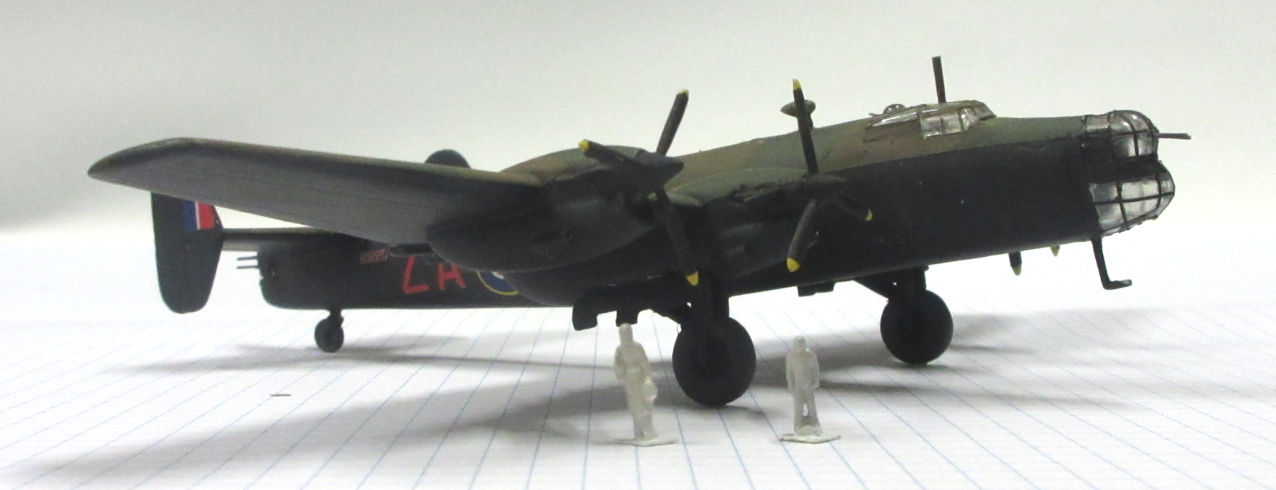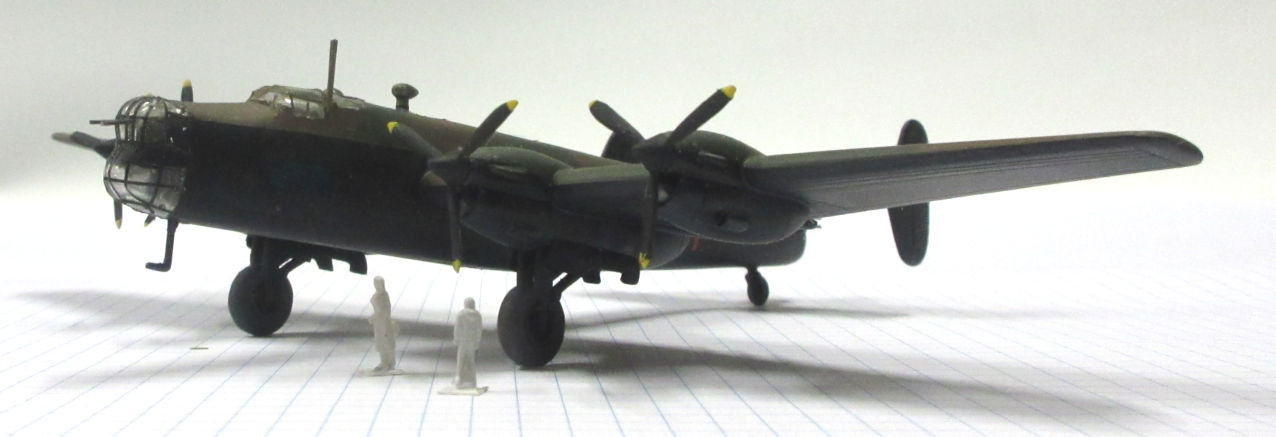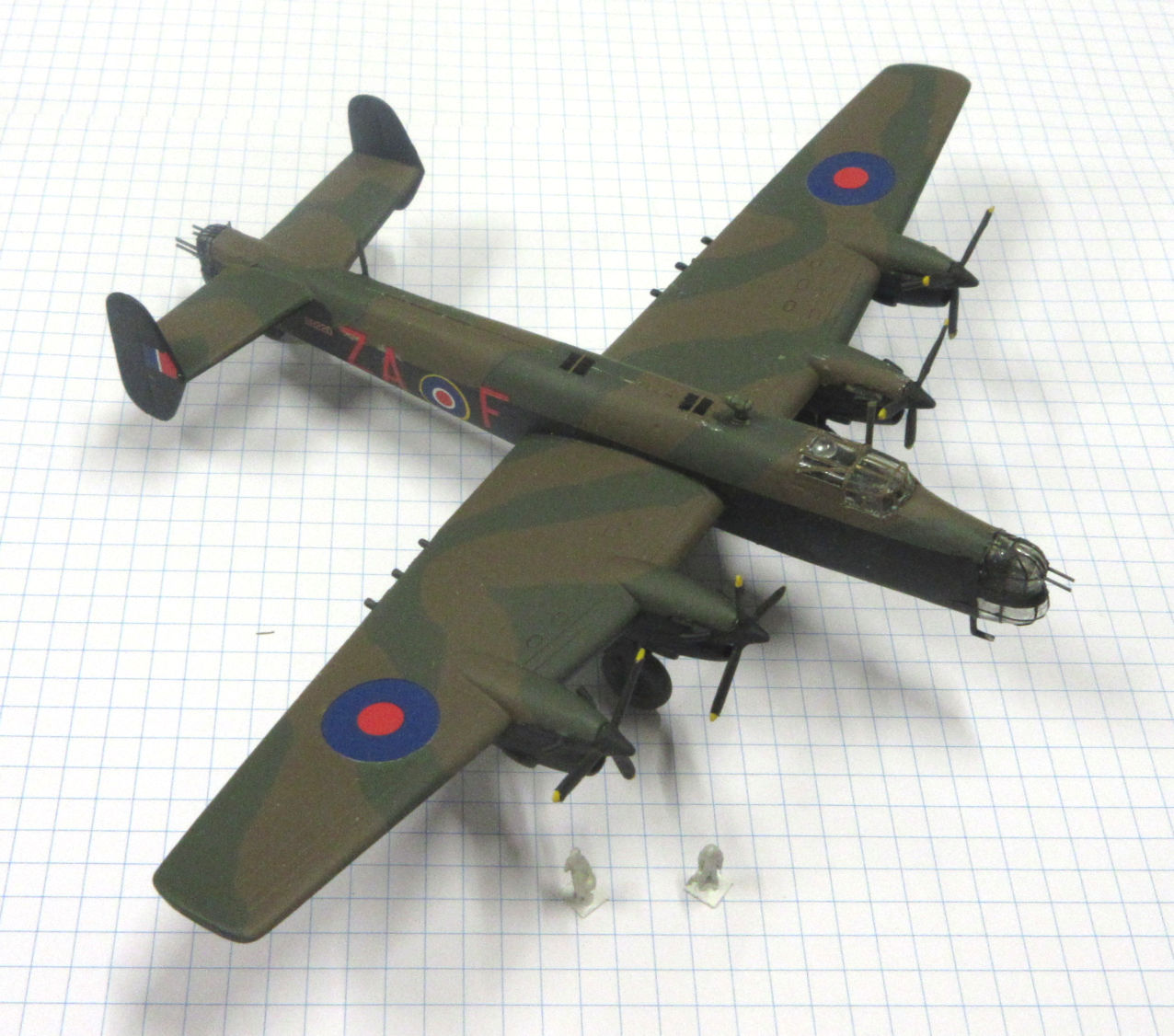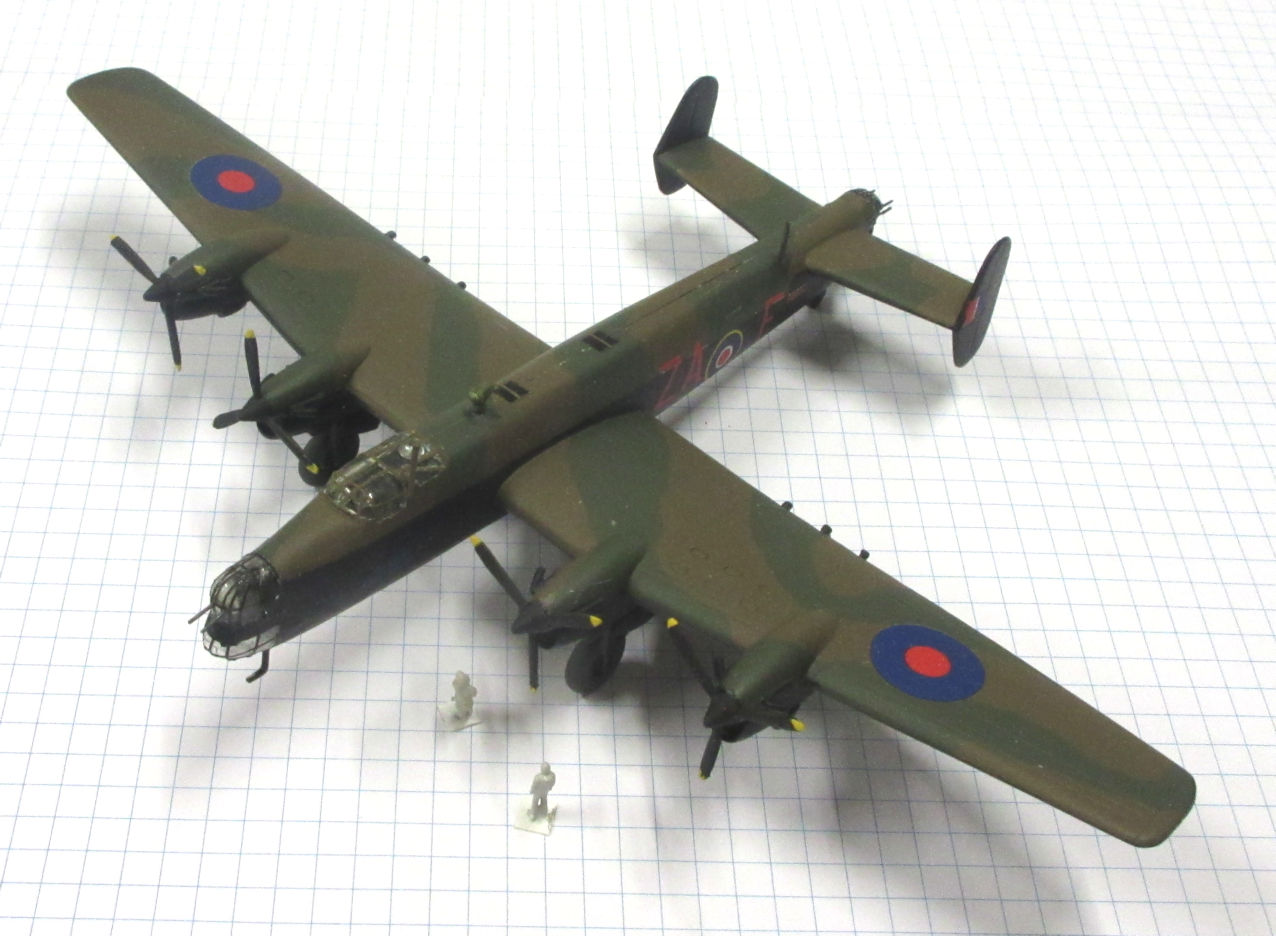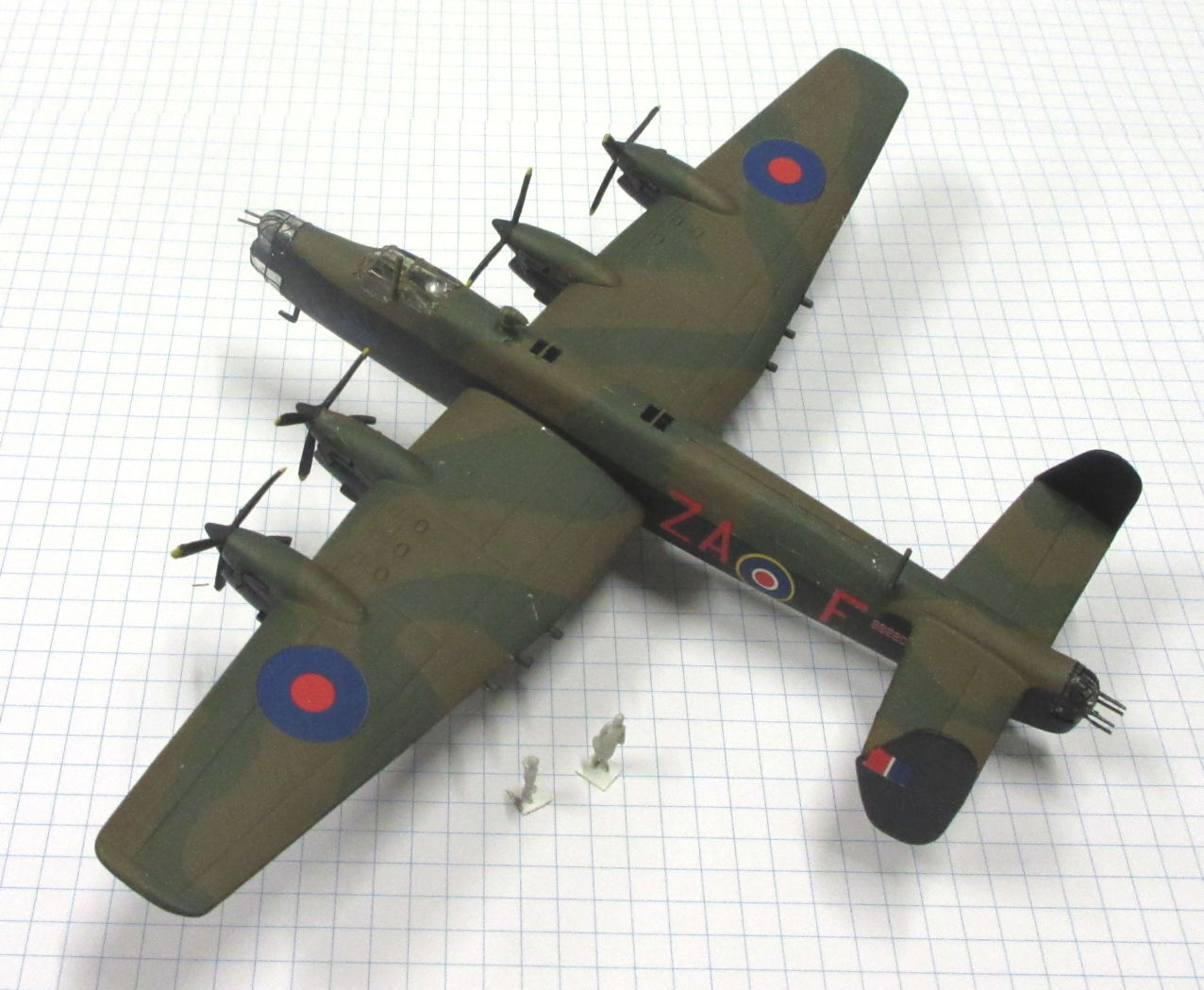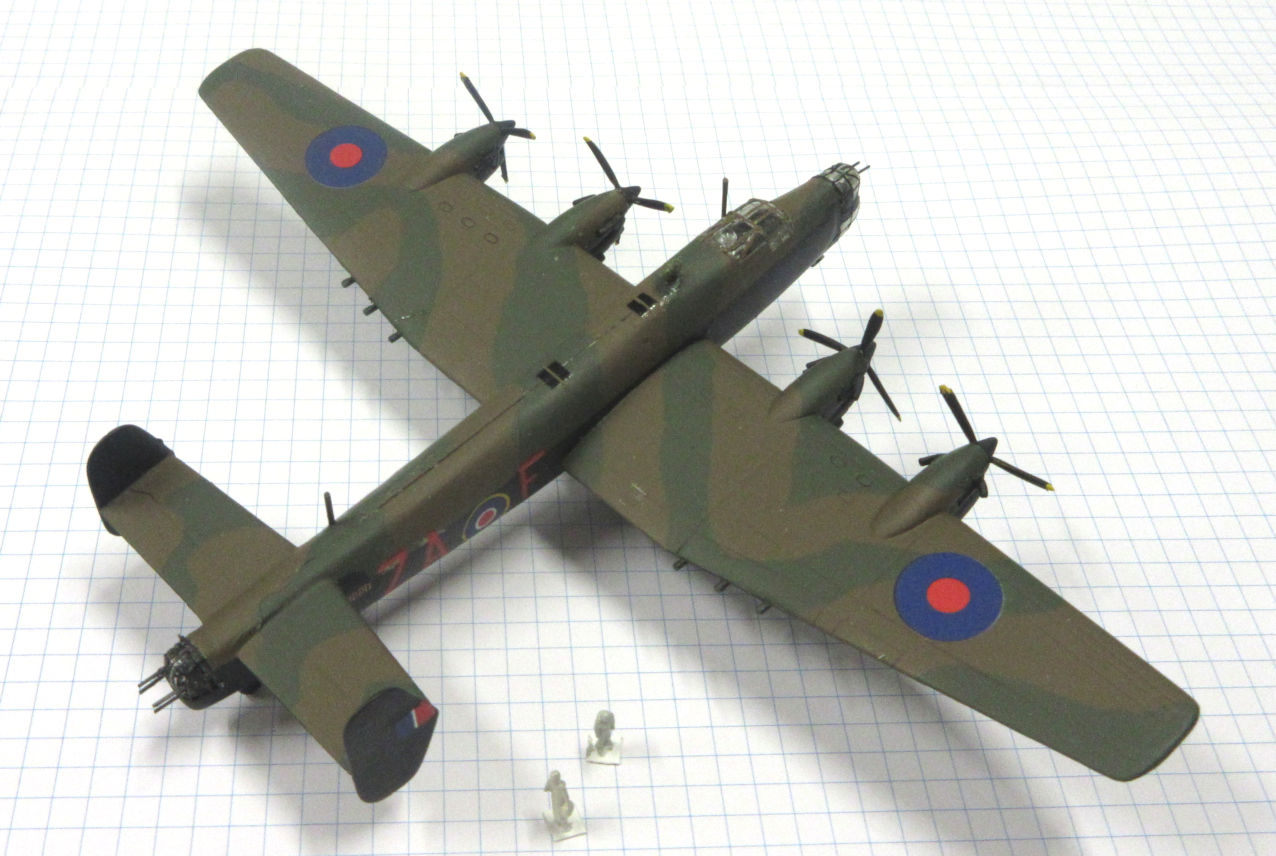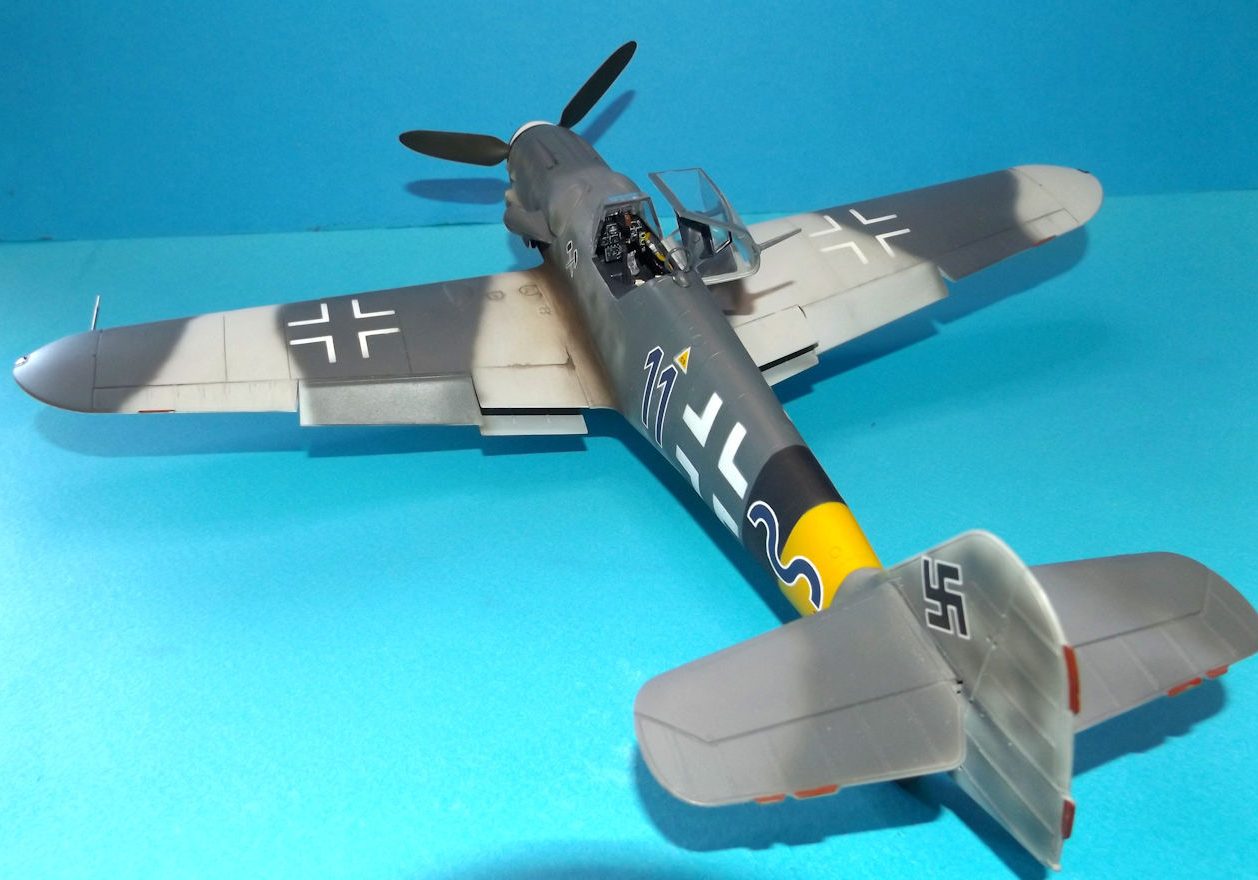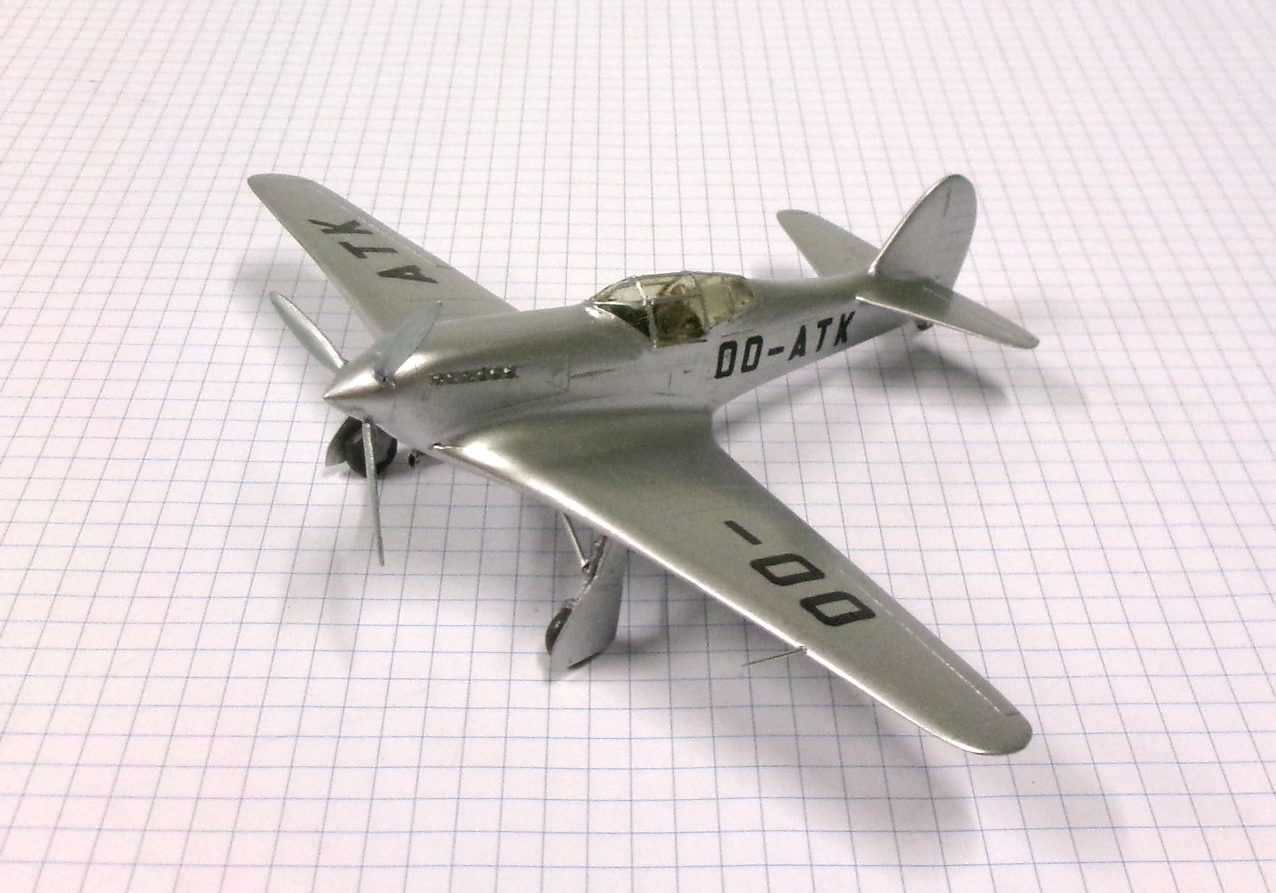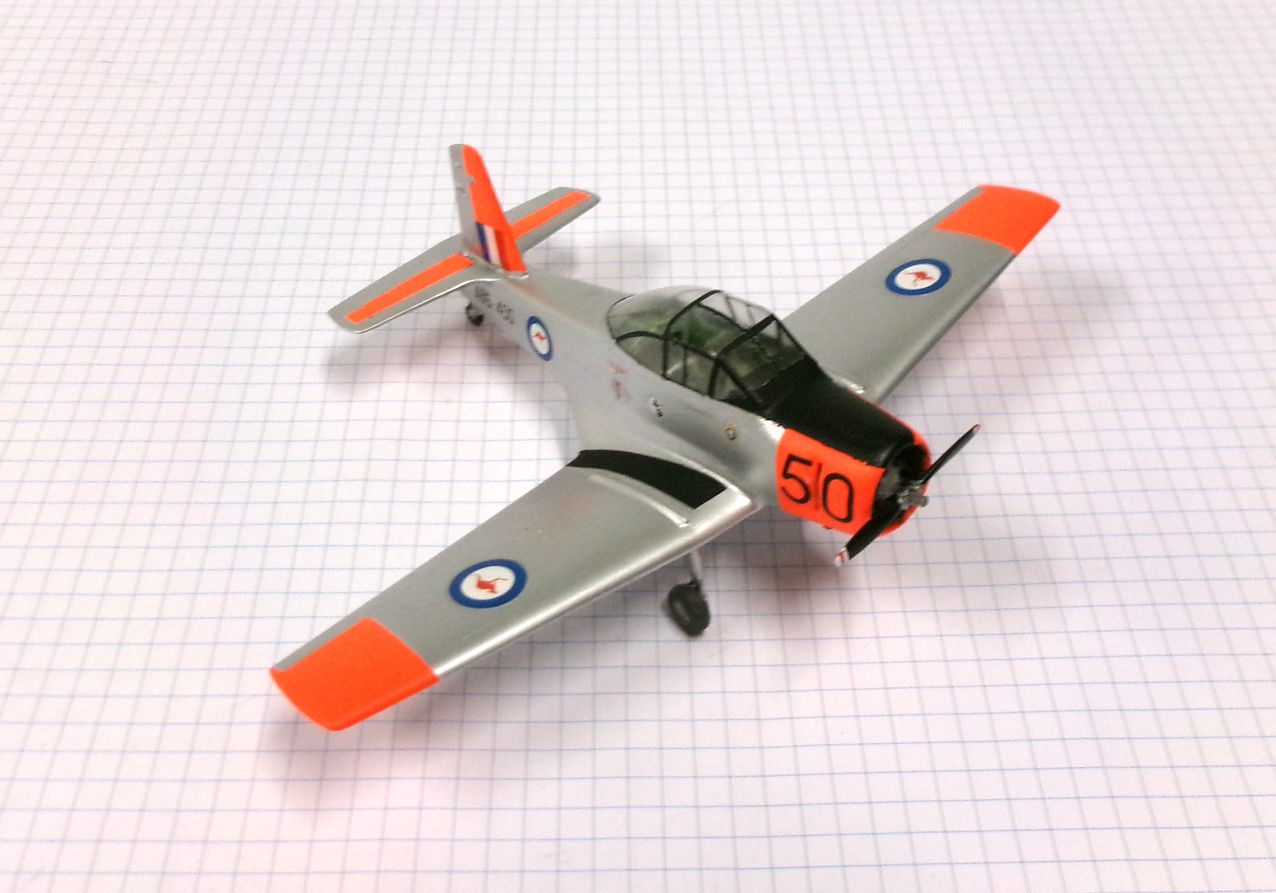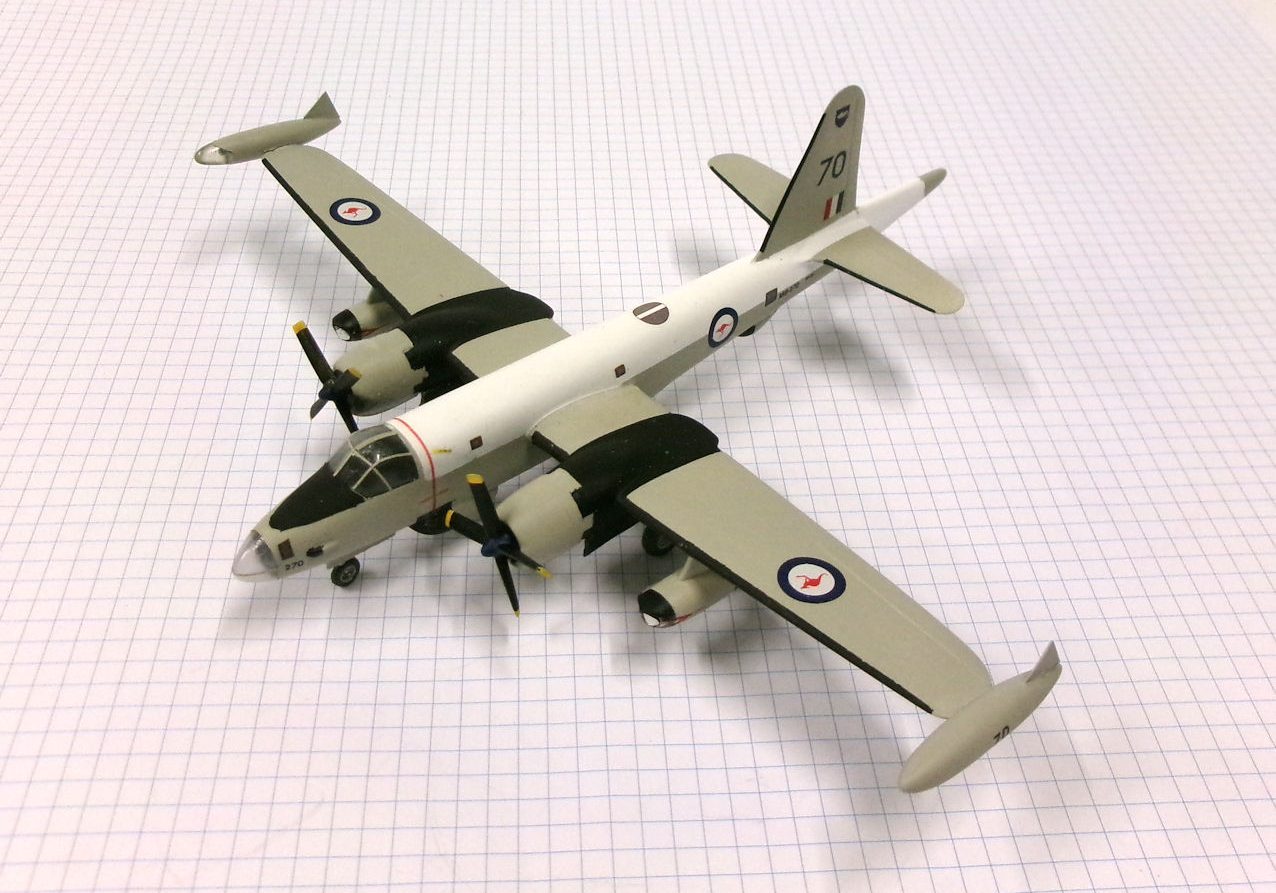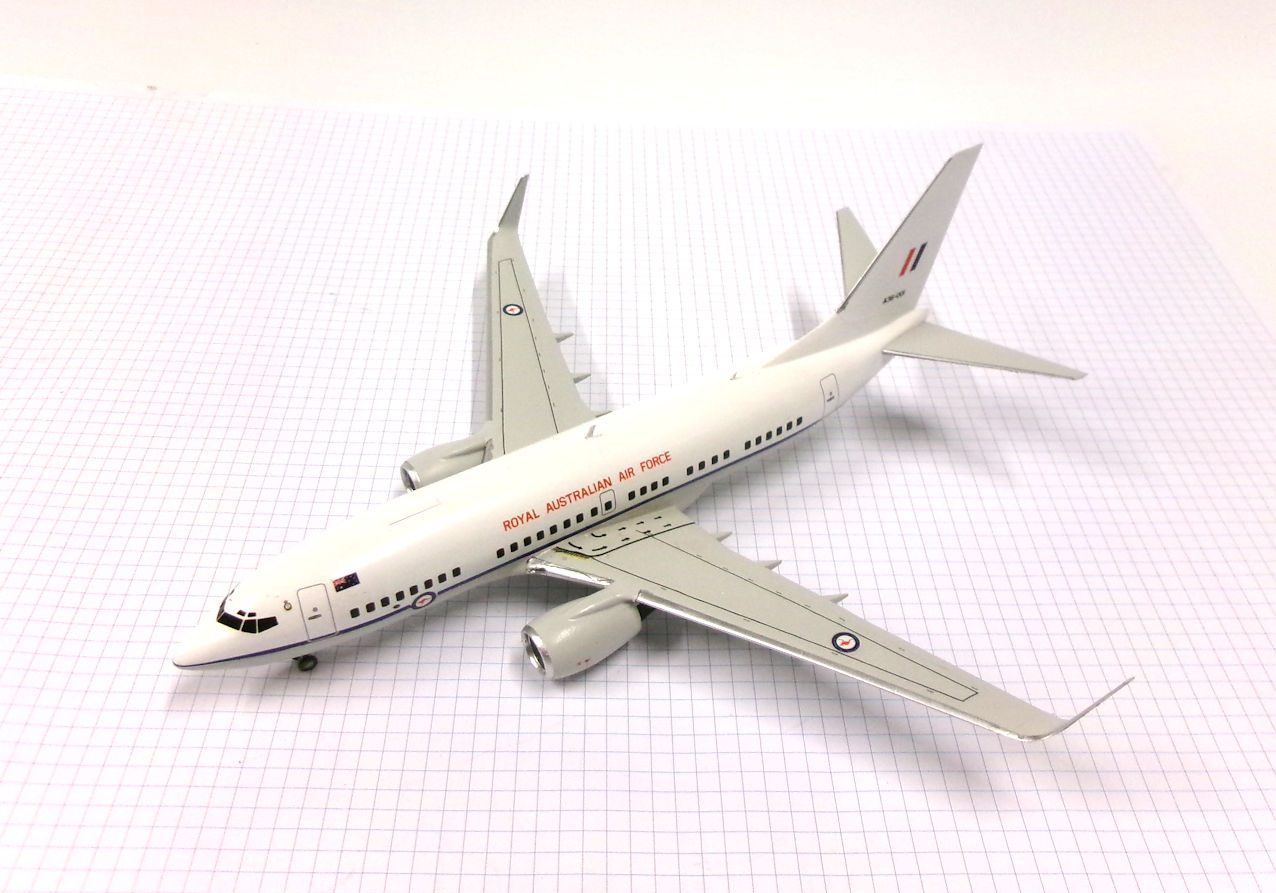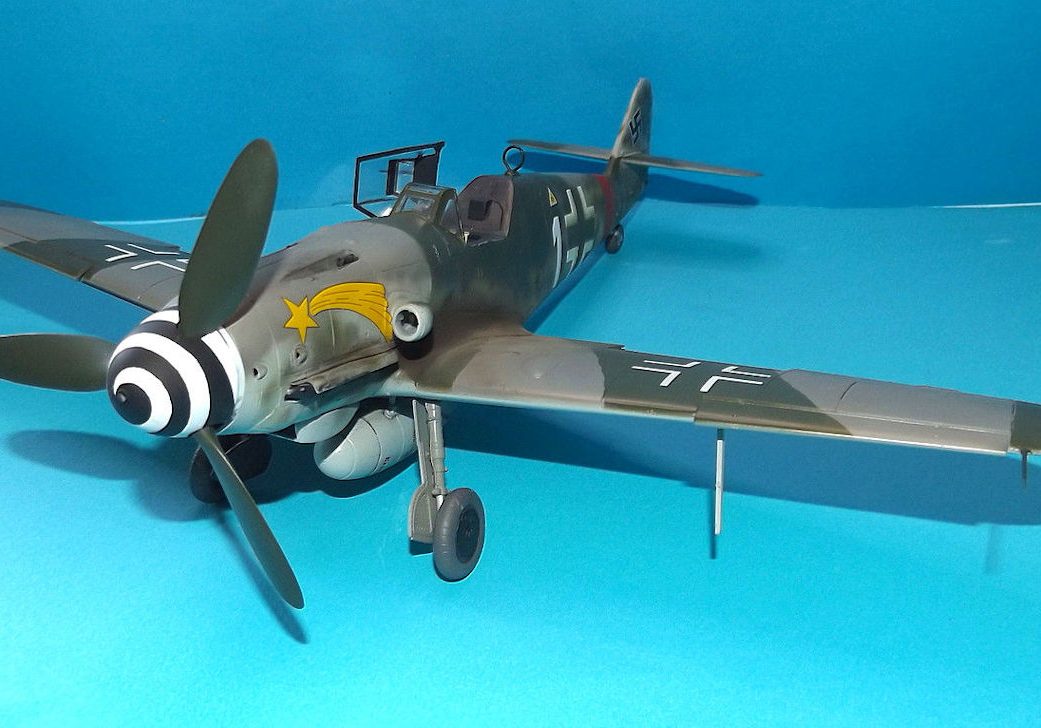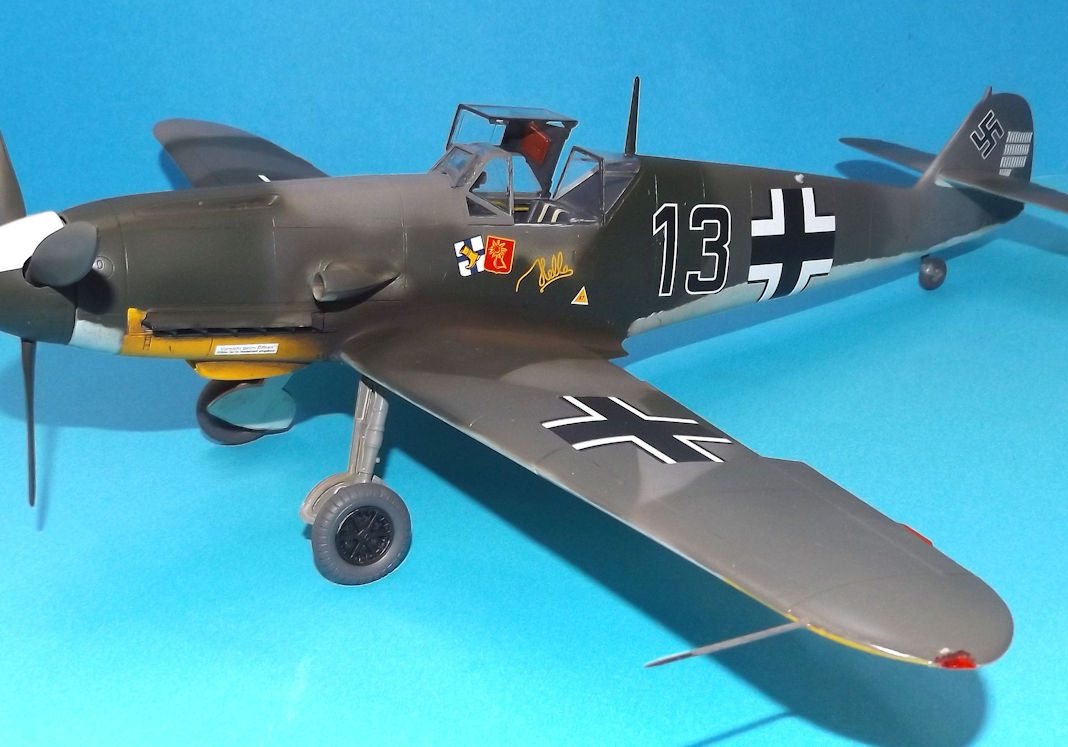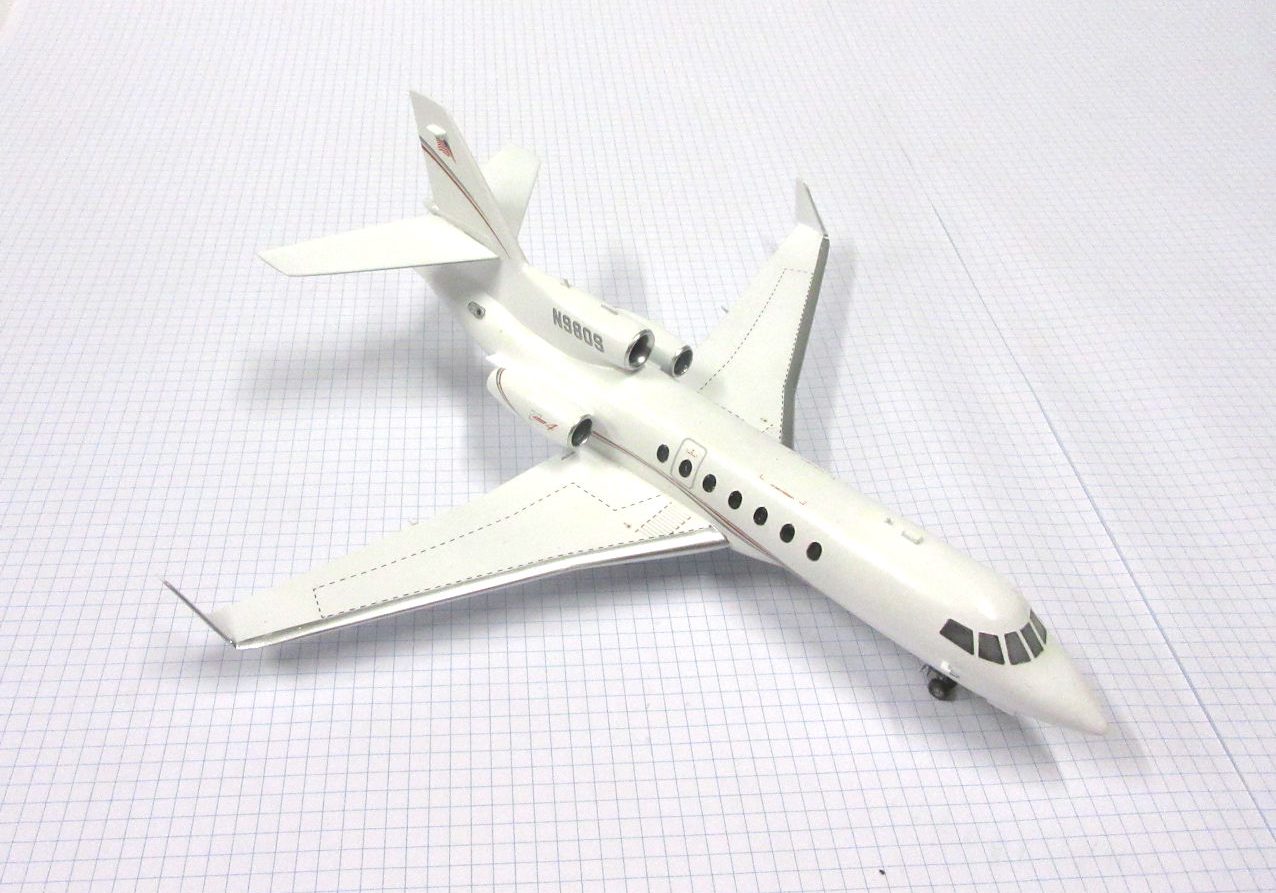History
The Halifax was one of three heavy bombers that served with Bomber Command of the Royal Air Force during World War II. Though not as famous as the Lancaster, is was a rugged, versatile and successful aeroplane.
Design of the Halifax began in 1937, the prototype first flew on 25 October 1939 and the second prototype with full combat equipment on 17 August 1940.
The Halifax began entering service in November 1940 and first flew operationally on 11 March 1941.
It was the first RAF four-engine bomber to make night attacks on Germany.
Over 6,100 Halifaxes were manufactured and between 1941 and 1945 they flew 75,532 sorties and dropped 231,252 tonnes of bombs on Europe.
They remained in service in many roles into the 1950s.
This model represents the Halifax ZA-F of 10 Squadron, Royal Air Force, which was lost on the night of 30/31 March 1942 during an attack on the German battleship Tirpitz.
Anigrand 1/144 kit completed by Leigh Edmonds in October 2013.
